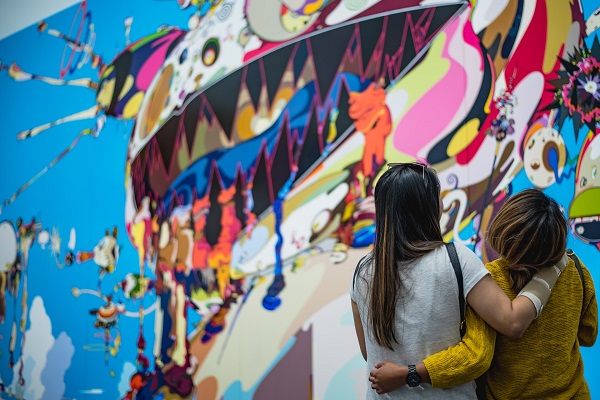I have been a full-time visual artist for over 3 decades now (geez, it’s been that long eh?) and I’ve made a living painting art, teaching art, consulting about art, helping with art restoration, etc. Basically, I live and breathe art, and I love my life just the way it is.
Nowadays, I guess you can say I’m a ‘talented’ artist, if we’re going by Stephen King’s definition of ‘talented’ (i.e. your art paid for your bills), and that my art skills have managed to not only give me a very comfortable life, but have also allowed me to pass on my knowledge to a new generation of artists.
But it wasn’t always like this.
For the first, I’m going to say, 10 years of my art career, I was an angsty, anti-establishment, never-gonna-sell-out-to-the-man, kind of artist. And that’s a great attitude to have about your art, really, regardless of your age, but it did come with a price, literally: I undervalued my art severely for the first 10 or so years of my career.
I sold paintings for a pack of cigarettes, exchanged lessons for coffee and a hot meal, heck, I even painted an entire wall mural so I could impress a girl (side note: she’s now my wife, so I don’t really regret it that much!). After all, I thought to myself: who am I to put a price tag on art?
So, before I wax poetic, I wanted to share with you a few lessons I learned about pricing your art. No, I’m not going to give you hard numbers or a mathematical formula (there is no ‘one size fits all’ formula for artworks anyway), but rather, I want to teach you mindsets and lessons:
Lesson 1: Match Your Peers
Your peers might be just as woefully unprepared as you, but learn from one another about proper pricing. If possible, look through other artists you’re barely familiar with about how they price it.
This is a good way to take an honest look at your art and your talents: ask yourself if you can do as well or better than the artist you’re scoping out. If yes, price your work the same. If not, go a little lower, but don’t lowball yourself.
Lesson 2: Defend Your Price
Throughout your art career, you’re going to have clients come up to you and ask you questions along these lines:
“Does your painting have to be this expensive?”
“Do you really think it’s worth that much?”
“Do you really think you’re worth that much?”
And you know what the answer to all these questions are?
That is all you need to say, and that is all the answer you need to give, because guess what…
 Lesson 3: Learn to Let Go
Lesson 3: Learn to Let Go
Some people just aren’t going to appreciate your art the way you want them to, and that’s ok: they are free not to buy your art. However, they are not free to berate you, insult you, or undervalue you. And neither are you.
Let it go. Sometimes words really are just words, and your art is simply more important than the opinion of some random stranger you’re never going to see ever again.
“Who am I to Put a Price Tag on Art?’
Well, it took me another 5 or 10 years but I finally have an answer: I’m the artist. I get to put a price on my creation, because it’s my blood, sweat, and tears (sometimes literally all three) that have gone into my craft. My product, my price.
It gladdens me to know that some of the paintings I made back when I was in my mid-20’s, the ones I practically gave away for free, are now fetching tens of thousands of dollars in the underground art world. Sure, my paintings now cost about the same, but it’s nice to get a reminder that even back then my art meant something to someone.

